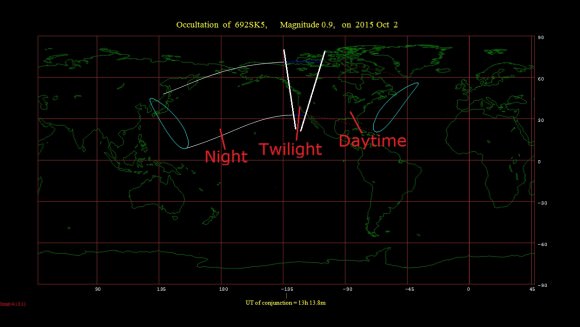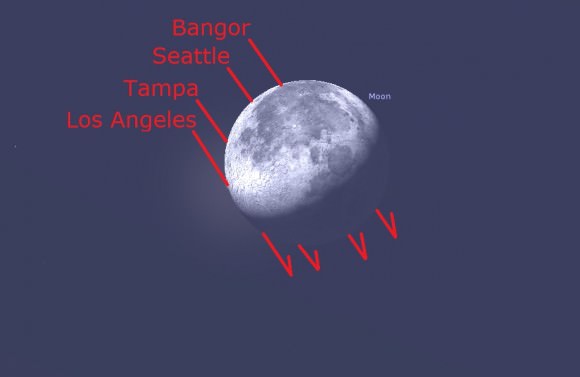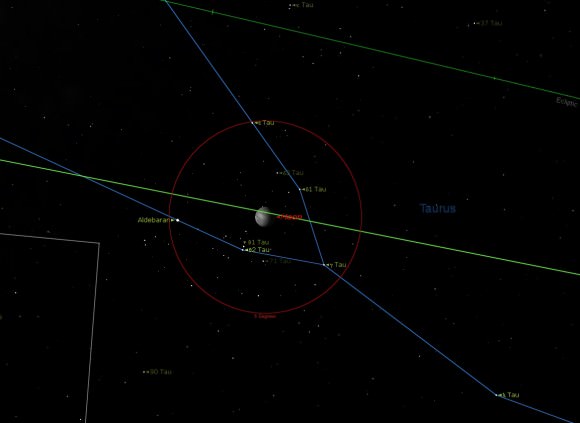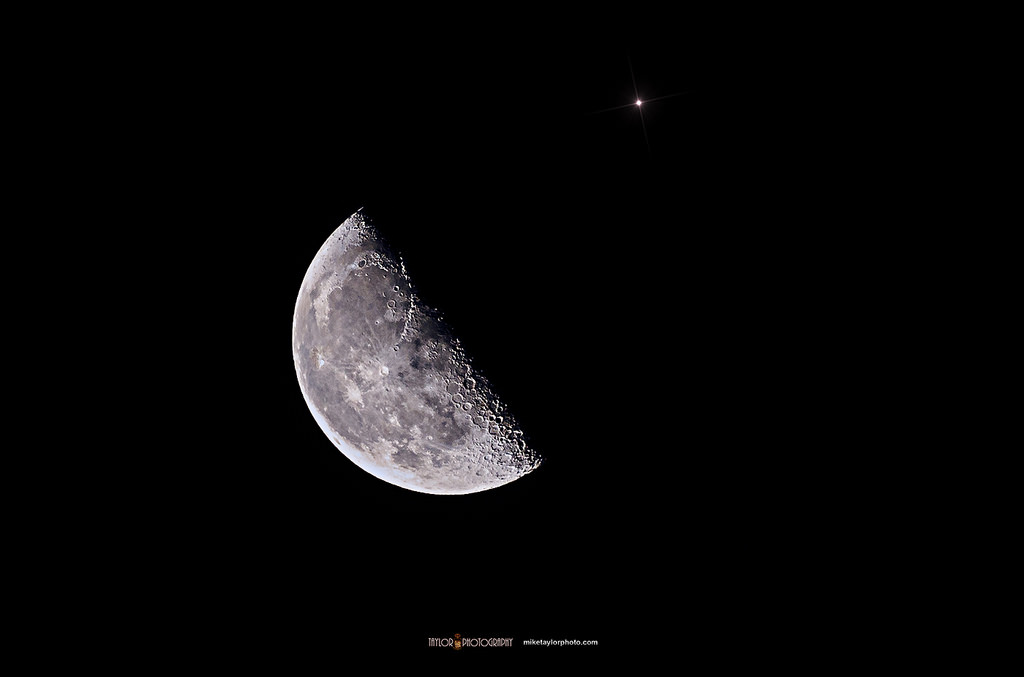How about that total lunar eclipse this past Sunday? Keep an eye of the waning gibbous Moon this week, as it begins a dramatic dive across the ecliptic towards a series of photogenic conjunctions throughout October.
The Main Event: This week’s highlight is an occultation of the bright +0.9 magnitude star Aldebaran (Alpha Tauri) by the waning gibbous Moon on Friday morning October 2nd.

This occurs in the pre-dawn hours for Alaskan residents, and under favorable dawn twilight skies along the U.S. and Canadian Pacific west coast; the remainder of the contiguous United States and Canada will see the occultation transpire after sunrise. This is the 10th of 49 occultations of Aldebaran by the Moon worldwide running from January 29th, 2015 through September 3rd, 2018. The Moon will be at 74% waning gibbous phase, and Aldebaran will disappear behind its illuminated limb to reappear from behind its trailing dark limb.
Check out this amazing Vine of the last occultation of Aldebaran by the Moon courtesy of Andrew Symes @FailedProtostar:
It’s interesting to note that the southern graze-line for the occultation roughly follows the U.S./Mexican border. Seeing a bright star wink in and out from behind the lunar valleys can be an unforgettable sight, adding an eerie 3D perspective to the view. A detailed analysis of the event can even help model the rugged limb of the Moon.
Hunting stars and planets in the daytime can be an interesting feat of visual athletics. We’ve managed to spy Aldebaran near the lunar limb with binoculars during an occultation witnessed from Alaska on September 4th, 1996, and can attest that it’s quite possible to see a +1st magnitude star near the Moon with optical aid. A clear blue sky is key. The Greek philosopher Thales noted that stars could be seen from the bottom of a well (though perhaps he’d fallen down a well or two too many in his time)… Friday’s event should push your local seeing to its limits. Start tracking Aldebaran before local sunrise, and you should be able to follow it all the way to the lunar limb, clear skies willing.

Here’s a listing of times for key events for Friday from around the U.S. Check out The International Occultation Timing Association’s page for the event for an extensive listing:

And whenever the Moon meets Aldebaran, it has to cross the open star cluster of the Hyades to get there, meaning there’ll be many other worthy occultations of moderately bright stars around October 2nd as well. Gamma Tauri, 75 Tauri, Theta^1 Tauri, and SAO93975 are all occulted by the Moon on the morning of October 2nd leading up to the Aldebaran occultation; particularly intriguing is the grazing occultation of +5 magnitude 75 Tauri across the Florida peninsula.

Fun fact: the Moon can, on occasion, occult members of the M45 Pleiades star cluster as well, as last occurred in 2010, and will next occur on 2023.
Chasing the Moon through October
Follow that Moon for the following dates with astronomical destiny worldwide:
- The Moon reaches Last Quarter phase on Sunday, October 4th at 21:06 UT/5:06 PM EDT.
- A close pass with Venus on October 8th, with a brilliant occultation visible in the pre-dawn hours from Australia.
- A tight photogenic grouping of the Moon, Mars and Jupiter in a four degree circle on the morning on October 9th;
- A close pass of the Moon just 36 hours from New near Mercury on the morning of Sunday, October 11th, with another occultation of the planet visible from Chile at dawn;
- And finally, New Moon (sans eclipse, this time) occurring at 00:06 UT on October 13th, marking the start of lunation 1148.
Why occultations? Consider the wow factor; light from Aldebaran left about 65 years ago, before the start of the Space Age, only to get ‘photobombed’ by the occulting Moon at the last moment. Four bright stars (Regulus, Spica, Antares and Aldebaran) lie along the Moon’s path in our current epoch. Dial the celestial scene back about two millennia ago, and the Moon was also capable of occulting the bright star Pollux in the astronomical constellation of Gemini as well.
We’ll be running video for the event clear skies willing Friday morning here from Hudson, Florida in the Tampa Bay area. And as always, let us know of your tales of astronomical tribulation and triumph!

